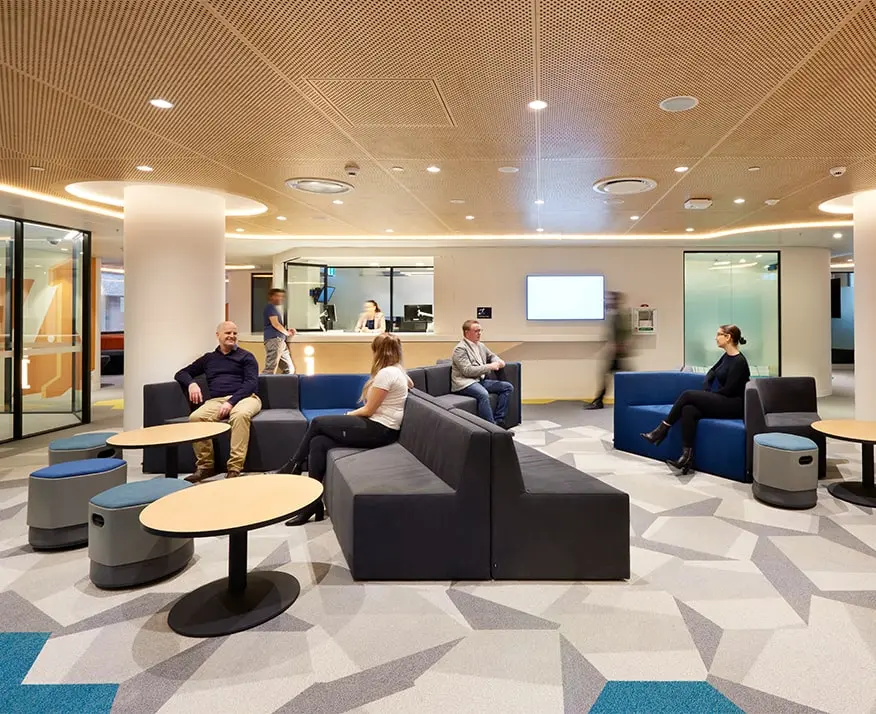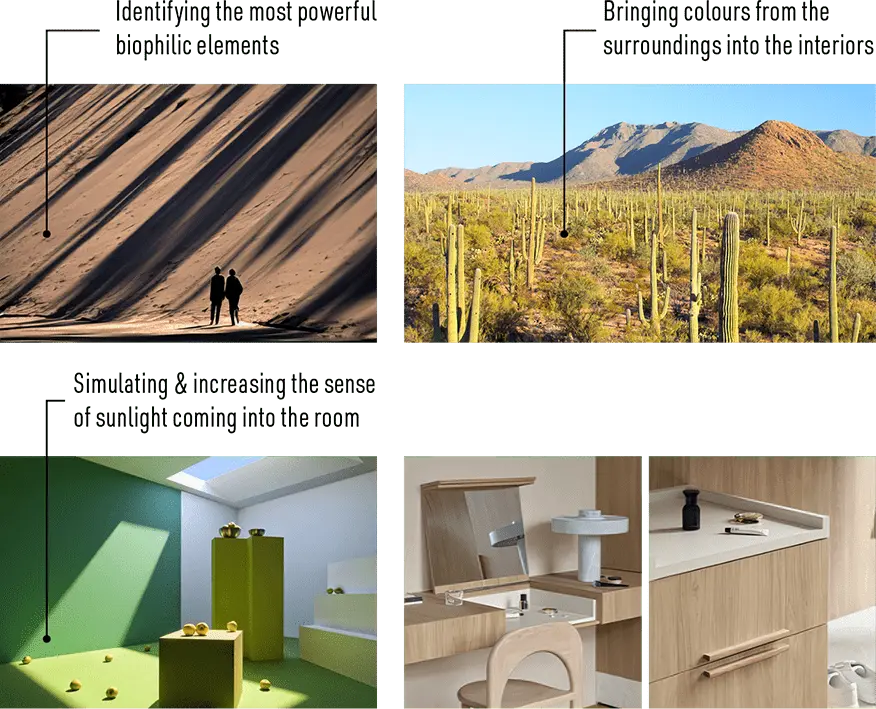
Here at GB-A we’re fortunate to have an incredibly talented and insightful interior design team. While they work across many sectors, one of their key focuses is justice and designing for courts.
Recently, we sat down with two of our interior designers from our Melbourne Studio, Emma Serraglio and Colie Leung to find out more about concept design for courts and why they love working in this sector.

Colie Leung, Interior Designer
“When it comes to early concept design, I enjoy establishing the foundational elements. Even though design evolves throughout the process, many initial conceptual decisions—whether it’s material selections, colour schemes, or spatial layouts—often remain central to the final design. There’s a sense of ownership which comes with shaping a project from the ground up, rather than simply implementing predefined ideas, and that’s something I truly value.
I enjoy working in the courts space because it presents a unique challenge: balancing the seriousness and formality of the environment while ensuring individuals feel secure and thoughtfully considered. Court proceedings can be overwhelming, so designing spaces that subtly ease the emotional tensions is incredibly fulfilling. I’m also proud to be part of a team that values traditional heritage aesthetics while being open to challenging them, redefining what justice spaces can look like without compromising their gravitas.

One of the most appealing aspects of working on court projects is the sheer variety – they extend far beyond just the courtroom. We design an extensive number of supporting spaces, from lobbies, receptions, and waiting areas to youth zones, offices, information counters, holding cells, judges’ lounges, chambers, kitchenette, and breakout spaces. It feels as if we are designing within a complete ecosystem.
Many of these spaces allow for a more relaxed design approach, balancing the formality of the courtroom, all while keeping key considerations such as security, privacy, and media management at the forefront.”

Emma Serraglio, Associate and Melbourne Studio Interiors Lead
“Central to my design philosophy is a commitment to concept-driven exploration. For each courthouse project, we establish a set of key design principles that define justice and align with specific client objectives, aiming to translate these principles into experiential spaces that go beyond mere functionality. I enjoy the challenge of evolving and refining ideas to produce interiors that evoke a sense of intention and integrity, ensuring that each design aligns with the philosophy of justice and supports the needs of its varied users.
I take great satisfaction in designing courthouse spaces, as it offers the opportunity to collaborate extensively with clients and stakeholders to ensure that each project reflects the unique needs and aspirations of the community it serves.

I find it highly rewarding to engage with user groups—including judges, lawyers, staff, and the public—throughout the design process to develop environments that are both functional and empathetic. This approach not only improves the emotional and psychological wellbeing of all users but also allows me to create interiors that foster calm, focus, and dignity. Crafting spaces that support and elevate individuals in their pursuit of justice is both professionally rewarding and deeply inspiring.
Designing the internal spaces of courthouse buildings is both a reflective and purposeful process for me, driven by a methodology that integrates creativity, technology, security, and sustainability with a strong focus on human-centered design. I am deeply engaged in crafting spaces that are not only functional but also embody the core values of justice and civic responsibility. This approach allows us to create environments where the ideals of fairness and transparency are palpable and meaningful.

We believe technology integration plays a vital role in designing functional courtroom spaces, with its success depending on precise spatial planning and a thorough understanding and implementation of key sight lines. I am passionate about seamlessly incorporating advanced systems to enhance functionality, security, evidence presentation, video conferencing, and communication during proceedings. Our objective is to create innovative and user-friendly environments that support the complex operations of a courthouse.”
You can find out more about our justice projects here.
UP NEXT






























